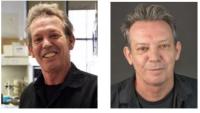In Memoriam: Peter William Grabham 1958-2025

Peter Grabham passed away peacefully at home on January 15th 2025 due to complications from uroepithelial cancer at the age of 66.
Pete, as he was fondly called by many of his friends and colleagues, was born in Luton, Bedfordshire, U.K. He attended the Wolverhampton University and obtained his bachelor’s degree in biology in 1980. He started his career in medical research at the Department of Cancer Studies at the University of Birmingham where he completed his Ph.D. program on neuronal cell growth and transformation in 1990. Following a brief postdoctoral training at the University of California-Irvine where he studied the effects of thrombin on astrocytes, he came to Columbia University in 1993 where he joined the laboratory of Professor Daniel Goldberg in the Department of Pharmacology where he studied nerve growth factors and neuroscience. In 2005, Pete joined the laboratory of Professor Charles Geard in the Center for Radiological Research (CRR) to examine the effects of radiation quality on damage response in both two-dimensional monolayers and three-dimensional human vessel models. In 2009, Pete was promoted to Assistant Professor and began his independent research career on the effects of space radiation on vascular endothelium with the funding support of NASA. Pete was well known for his development of the 3D human vessel culture system to examine the effects of space radiation on neurovascular functions His studies paved the way in elucidating how microvascular dysfunction induces neurodegeneration and the signaling process involved in angiogenesis. Throughout his productive research career, Peter was well regarded by his peers as a serious and thoughtful investigator. To many of his colleagues at the CRR, Pete was a fun-loving, humorous, chatty, and easily approachable friend.
Pete is survived by his wife Ana Urso and a younger brother Alan who lives in the U.K. Pete will be very much missed by everyone whose path he crossed at the Radiation Research Society Annual Meetings, at the NASA Human Research Program Investigators’ Annual Meetings, and particularly by his long-standing colleagues and friends at Columbia.
From Tom Hei, David Brenner, Sally Amundson, Charles Geard and all of Pete’s friends at the CRR